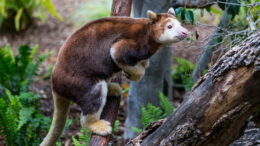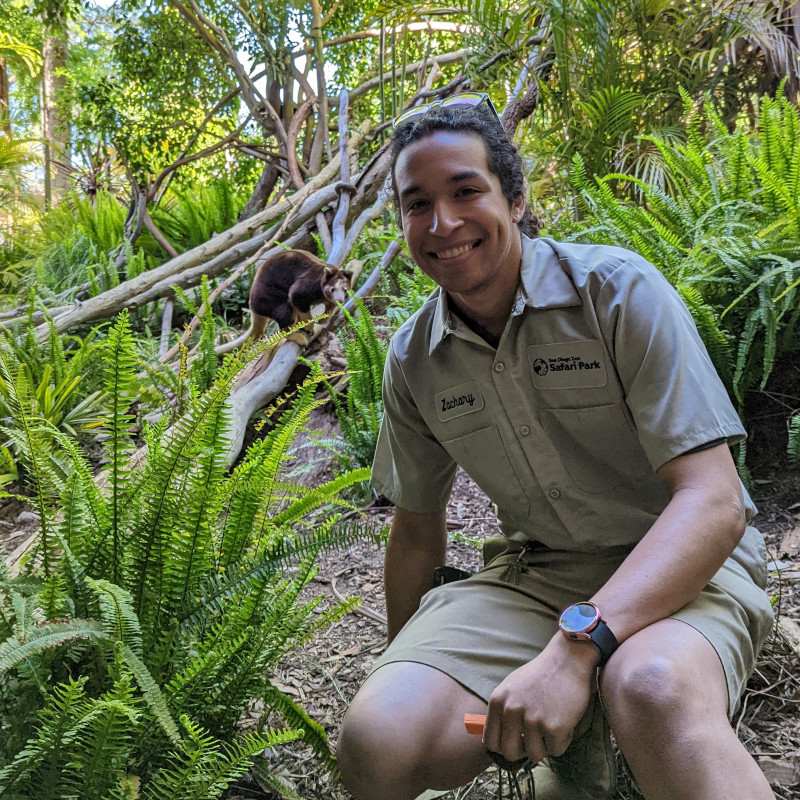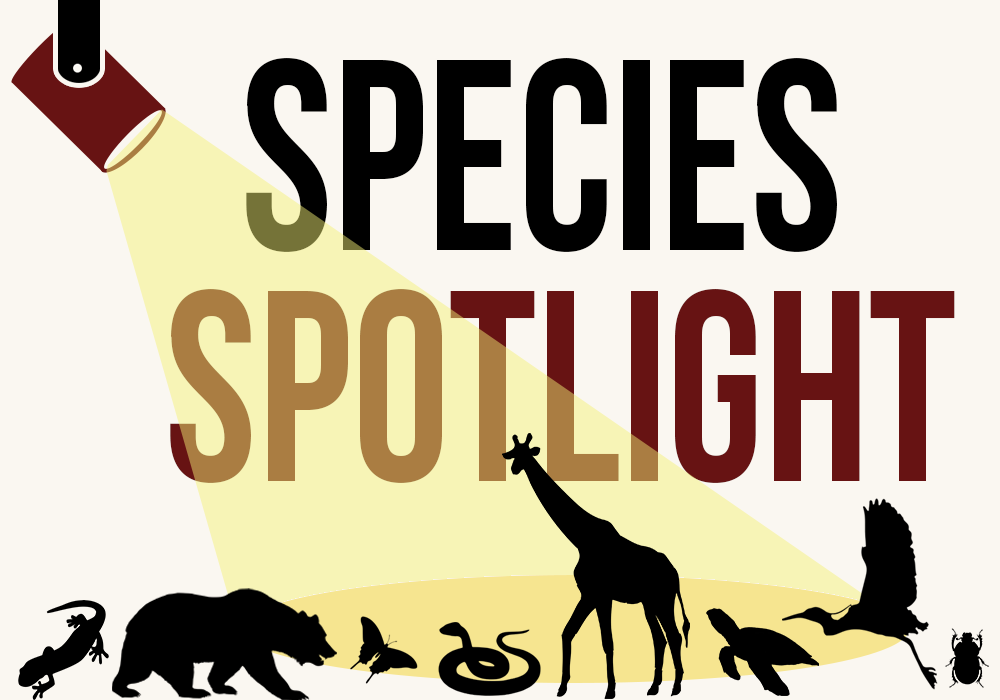 No one is exactly sure when this marsupial in the kangaroo family took to the trees, but it’s clearly well adapted for life on high — with long, bark-gripping claws, strong limbs for climbing, and a long tail for balance. These are good traits to have for an animal that spends most of its time 100 feet or more above the ground, nibbling ferns and orchids and looking out at dizzying views over the forest canopy.
No one is exactly sure when this marsupial in the kangaroo family took to the trees, but it’s clearly well adapted for life on high — with long, bark-gripping claws, strong limbs for climbing, and a long tail for balance. These are good traits to have for an animal that spends most of its time 100 feet or more above the ground, nibbling ferns and orchids and looking out at dizzying views over the forest canopy.
Species name:
Matschie’s tree kangaroo (Dendrolagus matschiei)
Description:
The Matschie’s tree kangaroo has thick, reddish mahogany fur on its back and a dark stripe down its spine. Its limbs, feet and ear tips are yellow, and its face is white or cream-colored. Stocky in build, a Matschie’s tree kangaroo has muscular forelimbs approximately the same length as its hind legs and long, sharp claws on both front and hind feet that help them climb trees. An adult female weighs between 15 and 20 pounds, while an adult male weighs between 20 and 25 pounds. They measure from 20 to 32 inches in height.
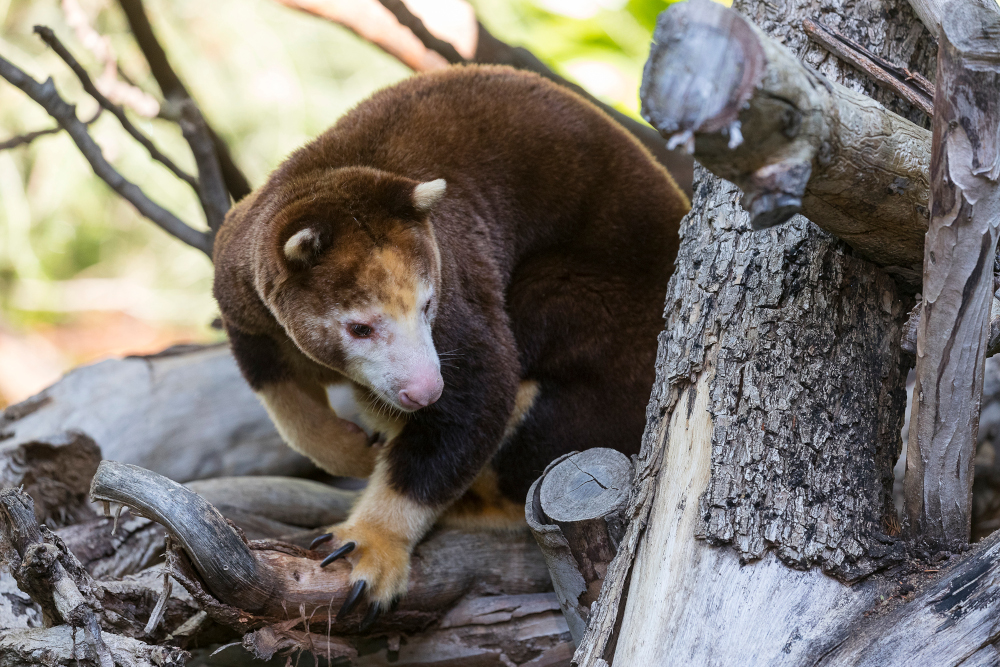
Where it’s found:
Native to Papua New Guinea and endemic to the Huon Peninsula, Matschie’s tree kangaroos live in elevations of up to 11,000 feet and spend most of their time in trees, eating leaves, vines, ferns, orchids, shrubs and herbs. Little is known about Matschie’s tree kangaroos in their native habitat, but they are believed to be solitary animals, except when a mother is raising offspring.
IUCN Red List status:
Endangered. It is estimated that there are fewer than 2,500 adults left in their native habitat, and their population is decreasing.
Major threats:
Matschie’s tree kangaroos are hunted by humans for food and trade. Habitat loss due to expanding agriculture further threatens their population.
Notable conservation programs:
The Association of Zoos and Aquariums Matschie’s Tree Kangaroo Species Survival Plan is designed to help save this species from the brink of extinction. San Diego Zoo Wildlife Alliance also donates to the Tree Kangaroo Conservation Program, which supports in situ conservation, scientific research, land protection and local community livelihoods in Papua New Guinea.
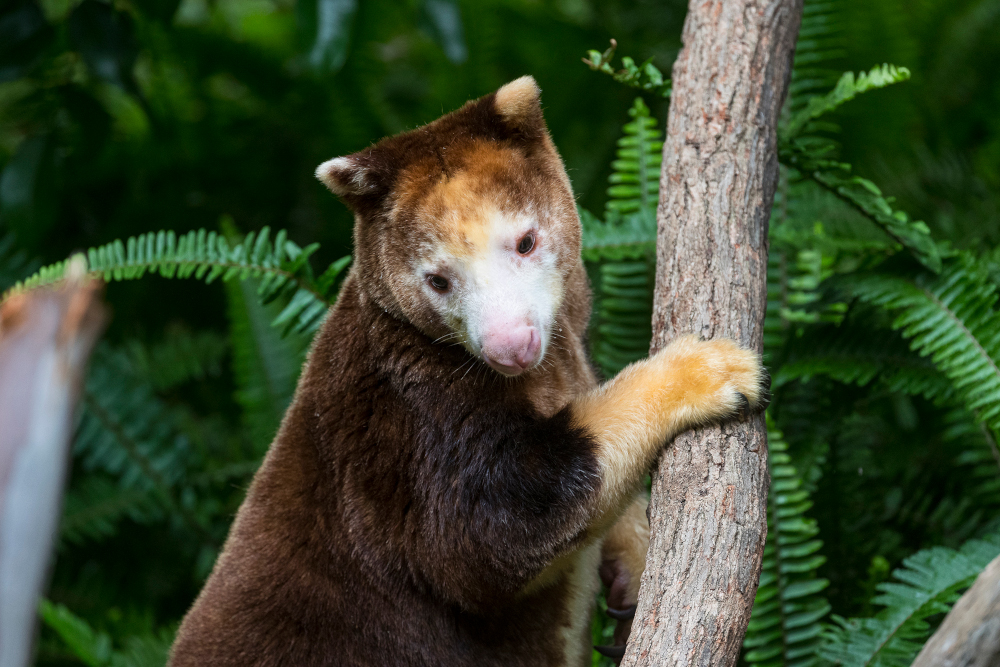
My favorite experience:
We have three Matschie’s tree kangaroos at the San Diego Zoo Safari Park, and in August 2022 saw the birth of the newest joey. On average, a female Matschie’s tree kangaroo cycles about every 55 days for about 48 hours, providing very limited time for the female and male to breed. We knew Arona, the female, and Beks, the male, had mated, but we didn’t know if the outcome would be successful. We began watching Arona on cameras placed in her den and anxiously waited for signs that she might be pregnant and give birth.
Arona participates in her own healthcare, and she has choice and control of what she wants or does not want to do. She has a great relationship with her wildlife care specialists, and because of this, we were able to look inside her pouch and discover the joey. Our team was so excited. This birth helps contribute to the world’s population of Matschie’s tree kangaroos, and we are proud of the work we do for the conservation of this species.
As a first-time mom, Arona is very attentive to her joey, and both are doing very well. The joey will remain in the pouch for up to 10 months or so, exiting the pouch for extended periods and returning to nurse. Arona will wean her joey when it’s about a year old, but the joey will stay close to mom for about a year and a half.
What else do we need to do to protect this species?
These animals need our help. Habitat loss through deforestation and poaching are pushing Matschie’s tree kangaroos to the brink of extinction. People can help the species by supporting organizations like San Diego Zoo Wildlife Alliance and others working to conserve this species. Also, when buying wood or furniture, ask if the wood is Forest Stewardship Council (FSC) certified. This means the wood was taken in a way approved by forestry experts.
![]()
Previously in The Revelator:
Species Spotlight: Baird’s Tapir, Our Allies Against Climate Change

